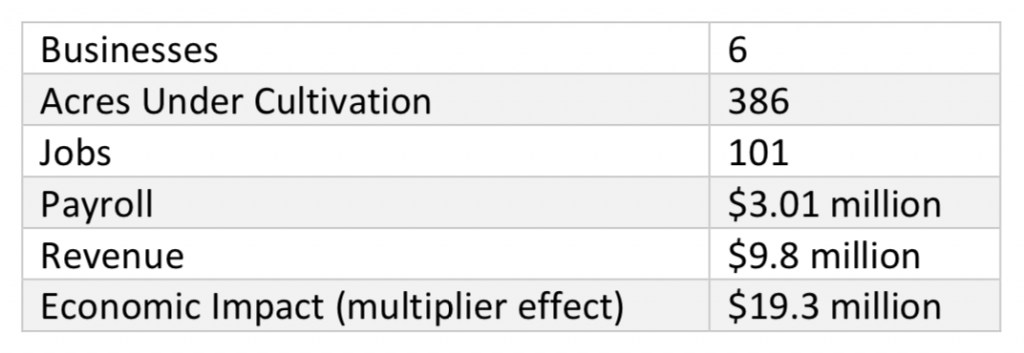Executive Summary:
The shellfish mariculture industry in Humboldt Bay has been growing in prominence in terms of seafood production in the region. Despite the industry’s importance, there is little reliable data available about its baseline socioeconomic conditions. To gain more accurate information about the economic dimensions of the Humboldt Bay mariculture industry, we conducted a business survey of all six businesses operating in the Bay. The 23-question survey covered topics including employment, tidelands, facilities and equipment, expenditures, production, revenue, marketing, collaboration, and the industry’s future. Surveys were administered in the summer of 2017 and questions focused on operations in the most recent year: 2016. Results indicate that the mariculture industry is an important contributor to the region’s economy. Key economic statistics for the industry in 2016 include:

Sixty-two percent of the industry revenue comes from the sale of whole Kumamoto oysters, 3% from the sale of whole Pacific oysters, and 34% from the sale of seed and larvae. When looking at the aggregate data, the industry appeared to be running at a slight loss in 2016. Total sales were $9.8 million and total expenditures $10.2 million. This may partly be the result of accounting practices of operations in Humboldt Bay that are part of larger companies that operate in multiple regions and by the fact that a few companies have recently made significant investments in seed and larvae production operations but those facilities were not yet running at capacity. In addition, expenditures can vary depending on where companies are in their permitting cycle. Seed was by far the largest expenditure accounting for 41% of the total.
Businesses were also asked to project future change in their businesses five years out (2022). Their responses indicate that they expect acreage under production, number of jobs, expenditures, production, and revenue all to increase in the coming years. Much of this projected increase is linked to the approval of the Humboldt Bay Harbor District’s pre- permitting project, which could open up more grounds for mature shellfish production. These responses highlight the potential economic benefits of that project. Seed and larvae production was also anticipated to increase substantially. Local hatchery, seed-setting, and nursery activities are anticipated to ramp up in coming years. Businesses noted that there have been shortages of shellfish seed and larvae industry-wide. Increased seed and larvae production in Humboldt Bay could offer more security to the local industry, reduce operating expenditures, and be an important source of revenue for businesses going forward. The top ranked concerns for businesses moving forward included tideland availability, permitting costs, water quality, and regulatory changes.



Recent Comments